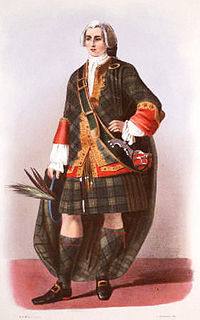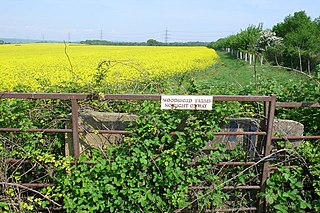Related Research Articles

The Picts were a confederation of Celtic language speaking peoples who lived in what is today eastern and northern Scotland during the Late British Iron Age and Early Medieval periods. Where they lived and what their culture was like can be inferred from early medieval texts and Pictish stones. Their Latin name, Picti, appears in written records from Late Antiquity to the 10th century. They lived to the north of the rivers Forth and Clyde. Early medieval sources report the existence of a distinct Pictish language, which today is believed to have been an Insular Celtic language, closely related to the Brittonic spoken by the Britons who lived to the south.

Primate is a title or rank bestowed on some archbishops in certain Christian churches. Depending on the particular tradition, it can denote either jurisdictional authority or (usually) ceremonial precedence.

Sovereignty is the full right and power of a governing body over itself, without any interference from outside sources or bodies. In political theory, sovereignty is a substantive term designating supreme authority over some polity. In international law, the important concept of sovereignty refers to the exercise of power by a state. De jure sovereignty refers to the legal right to do so; de facto sovereignty the ability in fact to do so
The English phrase rule of thumb refers to a principle with broad application that is not intended to be strictly accurate or reliable for every situation. It refers to an easily learned and easily applied procedure or standard, based on practical experience rather than theory. This usage of the phrase can be traced back to the seventeenth century and has been associated with various trades where quantities were measured by comparison to the width or length of a thumb.

Droit du seigneur, also known as jus primae noctis, is a supposed legal right in medieval Europe, allowing feudal lords to have sexual relations with subordinate women, in particular, on their wedding nights.
Not proven is a verdict available to a court in Scotland. Under Scots law, a criminal trial may end in one of three verdicts: one of conviction ("guilty") and two of acquittal.

Town privileges or borough rights were important features of European towns during most of the second millennium. The city law customary in Central Europe probably dates back to Italian models, which in turn were oriented towards the traditions of the self-administration of Roman cities

Ben Lawers is the highest mountain in the southern part of the Scottish Highlands. It lies to the north of Loch Tay, and is the highest point of a long ridge that includes seven Munros. It is the highest peak in Perthshire, and is the tenth highest Munro in Scotland. Ben Lawers was long thought to be over 4,000 feet (1,219.2 m) in height; accurate measurement in the 1870s showed it to be some 17 feet (5.2 m) short of this figure.
Udal law is a Norse-derived legal system, found in Shetland and Orkney in Scotland, and in Manx law in the Isle of Man. It is closely related to Odelsrett.
In English law, quare impedit was a writ commencing a common law action for deciding a disputed right of presentation to a benefice, a right known as an advowson. It was typically brought by a patron against a bishop who refuses to appoint the patron's nominee as a priest.

The law of heraldic arms governs the "bearing of arms", that is, the possession, use or display of arms, also called coats of arms, coat armour or armorial bearings. Although it is believed that the original function of coats of arms was to enable knights to identify each other on the battlefield, they soon acquired wider, more decorative uses. They are still widely used today by countries, public and private institutions and by individuals. The earliest writer on the law of arms was Bartolus de Saxoferrato. The officials who administer these matters are called pursuivants, heralds, or kings of arms. The law of arms is part of the law in countries which regulate heraldry, although not part of common law in England and in countries whose laws derive from English law.

Sir Thomas Innes of Learney (1893–1971) was Lord Lyon from 1945 to 1969, after having been Carrick Pursuivant and Albany Herald in the 1920s and 1930s. He was a very active Lord Lyon, strongly promoting his views of what his office was through his writings and pronouncements in his Court. In 1950, he convinced the Scots Law Times to start publishing the decisions made in Lyon Court. By ruling on uncontested petitions, he was able to expound many of his theories in court but not under review of his superior court, and get them published in the judicial record. His treatise, Scots Heraldry, was first published in 1934 when he was Carrick Pursuivant; then a second, enlarged edition came out in 1956, and it has practically eclipsed earlier works on the subject. Following his retirement as Lord Lyon in 1969, he was appointed Marchmont Herald.

The Scottish Gaelic word clann means children. In early times, and possibly even today, Scottish clan members believed themselves to descend from a common ancestor, the founder of the clan, after whom the clan is named. The clan chief is the representative of this founder, and represents the clan. In the Scottish clan system, a chief is greater than a chieftain, a designation applied to heads of branches of a clan. Scottish clans that no longer have a clan chief are referred to as armigerous clans.
A pledge is a bailment that conveys possessory title to property owned by a debtor to a creditor to secure repayment for some debt or obligation and to the mutual benefit of both parties. The term is also used to denote the property which constitutes the security. The pledge is a type of security interest.
Moncrieff v Jamieson [2007] UKHL 42 is a Scottish property law case decided by the House of Lords on easements.

Right of way is "the legal right, established by usage or grant, to pass along a specific route through grounds or property belonging to another", or "a path or thoroughfare subject to such a right". This article is mainly about access by foot, by bicycle, horseback, or along a waterway, and Right-of-way (transportation) focusses on highways, railways, pipelines, etc. A footpath is a right of way that can only be used by pedestrians.

A voluntary group or union is a group of individuals who enter into an agreement, usually as volunteers, to form a body to accomplish a purpose. Common examples include trade associations, trade unions, learned societies, professional associations, and environmental groups.

Scots law is the legal system of Scotland. It is a hybrid or mixed legal system containing civil law and common law elements, that traces its roots to a number of different historical sources. Together with English law and Northern Irish law, it is one of the three legal systems of the United Kingdom.

In English common law, real property, real estate, realty, or immovable property is land which is the property of some person and all structures integrated with or affixed to the land, including crops, buildings, machinery, wells, dams, ponds, mines, canals, and roads, among other things. The term is historic, arising from the now-discontinued form of action, which distinguished between real property disputes and personal property disputes. Personal property was, and continues to be, all property that is not real property.
References
- ↑ Chisholm, Hugh, ed. (1911). . Encyclopædia Britannica . 7 (11th ed.). Cambridge University Press. p. 914.
- Bell, Dictionary and Digest of the Laws of Scotland
| This article related to law in Scotland is a stub. You can help Wikipedia by expanding it. |